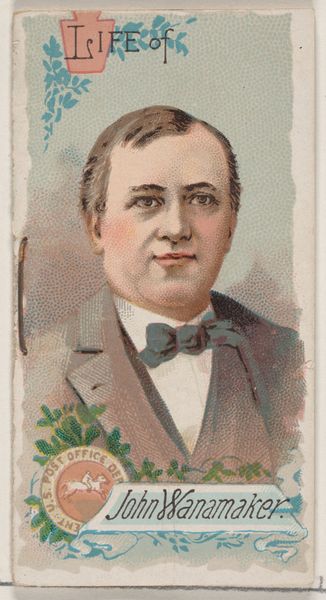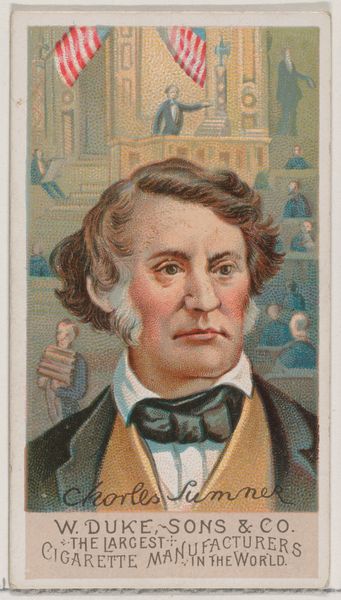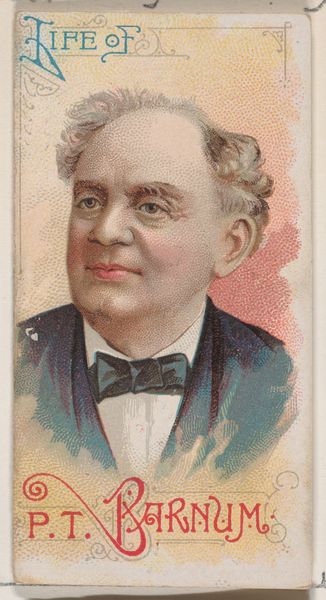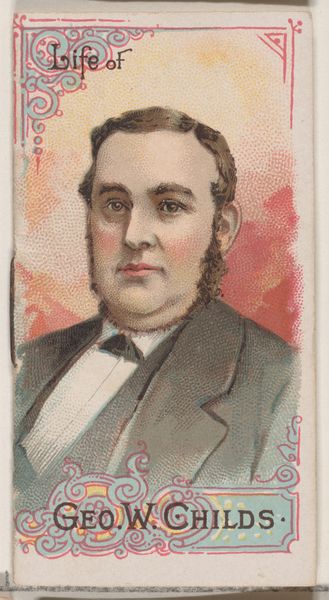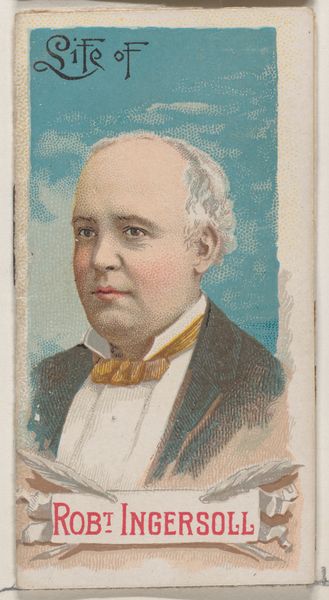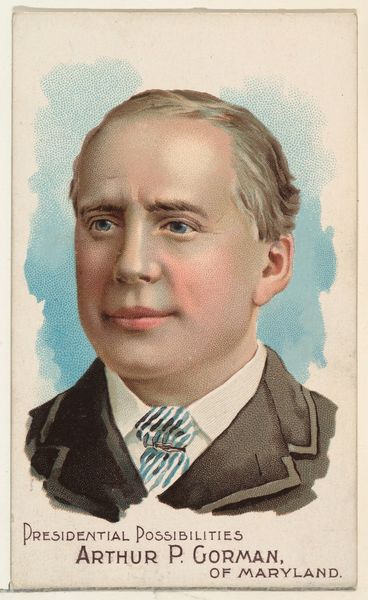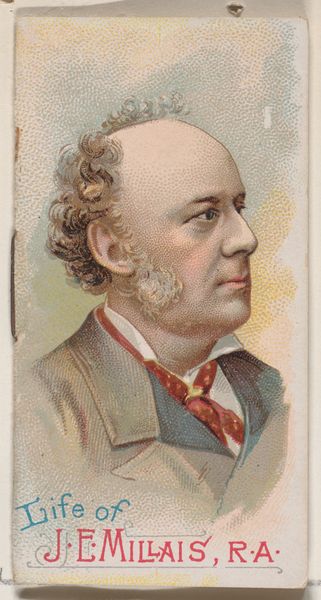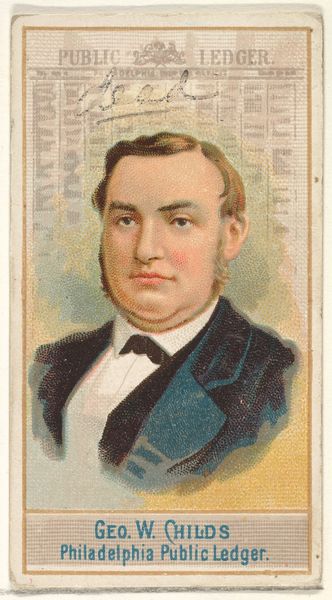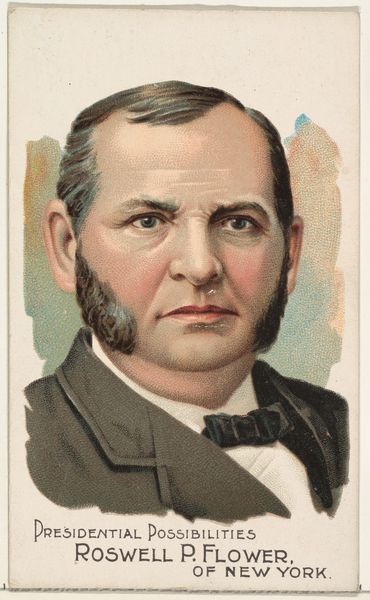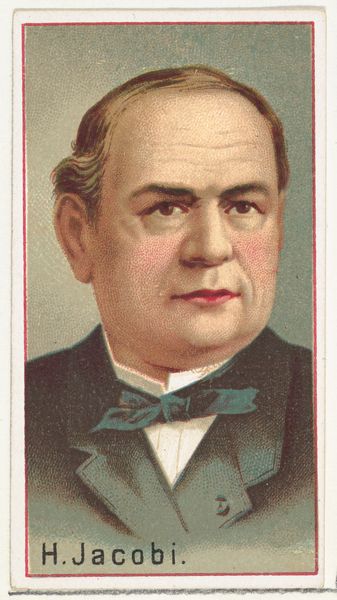
Ignatius Donnelly of Minnesota, from the Presidential Possibilities series (N124) issued by Duke Sons & Co. to promote Honest Long Cut Tobacco 1888
0:00
0:00
drawing, graphic-art, print
#
portrait
#
drawing
#
graphic-art
# print
#
caricature
#
caricature
Dimensions: Sheet: 4 1/8 × 2 1/2 in. (10.4 × 6.4 cm)
Copyright: Public Domain
Editor: Here we have an 1888 print titled "Ignatius Donnelly of Minnesota, from the Presidential Possibilities series," made by W. Duke, Sons & Co. It has the feel of a political caricature, yet there’s something quite formal about it as well. How do we read this image today? Curator: It’s fascinating how these commercial prints can open up a dialogue about power, representation, and consumption. Donnelly, presented as a presidential “possibility”, is commodified—literally sold with tobacco. Consider the era: post-Reconstruction America, rife with economic anxieties and burgeoning media. How does the act of turning a politician into a collectible object change our relationship to political power? Editor: So, it’s not just a portrait, but a statement on how politics and consumerism were becoming intertwined? Curator: Precisely. And consider the target audience: predominantly white, male consumers. This image, and the "Presidential Possibilities" series as a whole, subtly reinforces the idea of who is deemed “presidential” material. Who gets a platform, and who is excluded from that narrative? Does the somewhat exaggerated portrayal hint at deeper anxieties about populism? Editor: That’s a good point. Thinking about it now, the somewhat puffed up face could also read as a comment on excess and ambition... Curator: Exactly! And who benefits from perpetuating that image? Analyzing these seemingly simple prints allows us to unpack the complex social and political currents of the time and to critically examine who had—and continues to have—access to shaping public opinion. What do you take away from this understanding? Editor: I realize there’s more than just the candidate being sold here; it's an entire ideology embedded in something as commonplace as a tobacco card. Curator: It shows that visual culture, even in its most commercial forms, can be a powerful site of resistance or complicity, depending on who’s doing the looking and what questions they're asking.
Comments
No comments
Be the first to comment and join the conversation on the ultimate creative platform.
